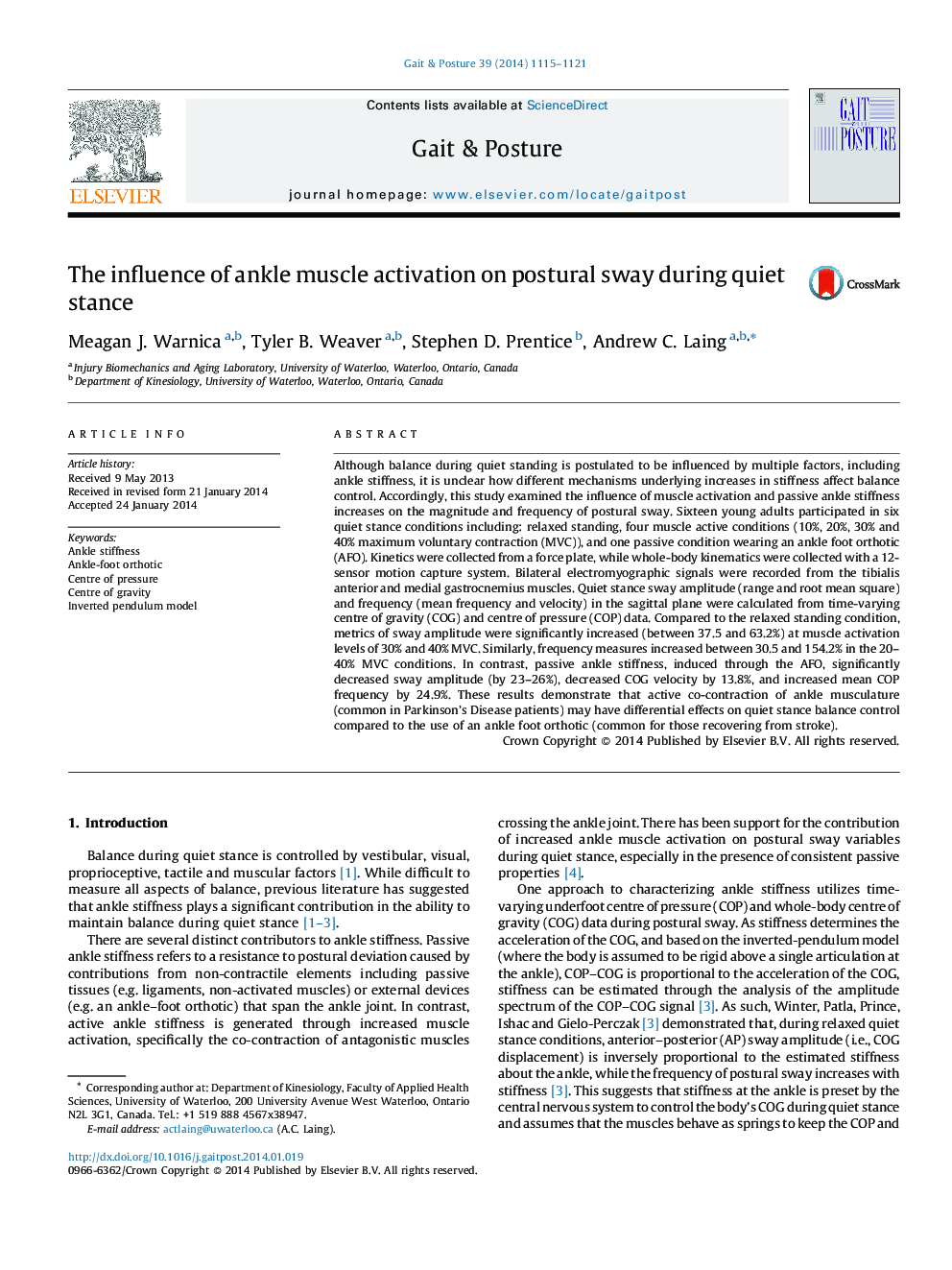| کد مقاله | کد نشریه | سال انتشار | مقاله انگلیسی | نسخه تمام متن |
|---|---|---|---|---|
| 6206316 | 1265643 | 2014 | 7 صفحه PDF | دانلود رایگان |
- Ankle stiffness was altered passively (orthotic) and actively (muscle activation).
- Differential effects on COP and COG sway during quiet stance were observed.
- Implications for disorders that influence ankle stiffness via different mechanisms.
Although balance during quiet standing is postulated to be influenced by multiple factors, including ankle stiffness, it is unclear how different mechanisms underlying increases in stiffness affect balance control. Accordingly, this study examined the influence of muscle activation and passive ankle stiffness increases on the magnitude and frequency of postural sway. Sixteen young adults participated in six quiet stance conditions including: relaxed standing, four muscle active conditions (10%, 20%, 30% and 40% maximum voluntary contraction (MVC)), and one passive condition wearing an ankle foot orthotic (AFO). Kinetics were collected from a force plate, while whole-body kinematics were collected with a 12-sensor motion capture system. Bilateral electromyographic signals were recorded from the tibialis anterior and medial gastrocnemius muscles. Quiet stance sway amplitude (range and root mean square) and frequency (mean frequency and velocity) in the sagittal plane were calculated from time-varying centre of gravity (COG) and centre of pressure (COP) data. Compared to the relaxed standing condition, metrics of sway amplitude were significantly increased (between 37.5 and 63.2%) at muscle activation levels of 30% and 40% MVC. Similarly, frequency measures increased between 30.5 and 154.2% in the 20-40% MVC conditions. In contrast, passive ankle stiffness, induced through the AFO, significantly decreased sway amplitude (by 23-26%), decreased COG velocity by 13.8%, and increased mean COP frequency by 24.9%. These results demonstrate that active co-contraction of ankle musculature (common in Parkinson's Disease patients) may have differential effects on quiet stance balance control compared to the use of an ankle foot orthotic (common for those recovering from stroke).
Journal: Gait & Posture - Volume 39, Issue 4, April 2014, Pages 1115-1121
